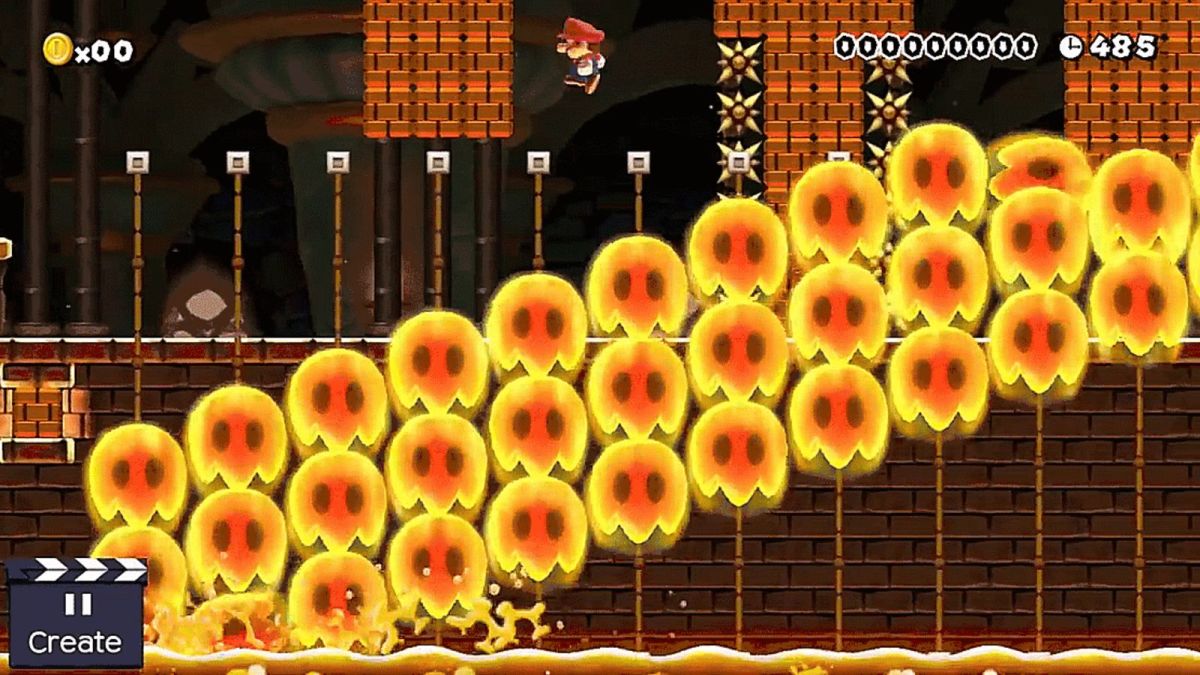Introduction the Art of Platformer Level Design

In the realm of video game design, platformer games hold a special place, captivating players with their intricate challenges, imaginative worlds, and rewarding sense of progression. At the heart of every captivating platformer lies a series of well-crafted levels, each meticulously designed to engage and enthrall players. In this comprehensive guide, we’ll delve into the art of platformer level design, exploring the principles, techniques, and secrets that contribute to creating unforgettable levels that leave players wanting more.
Principles of Effective Level Design

- Gameplay Mechanics:
- Solid Foundations: The foundation of any platformer level lies in its core gameplay mechanics. These mechanics should be intuitive and responsive, allowing players to control their character with precision and fluidity. Whether it’s jumping, running, or interacting with objects, the mechanics should feel natural and second nature to the player, immersing them fully into the game world.
- Variety and Innovation: While core mechanics provide the foundation, introducing variety and innovation keeps players engaged and prevents levels from becoming repetitive or predictable. Adding new obstacles, enemies, and challenges that leverage the core mechanics in unique ways keeps the gameplay fresh and exciting, constantly pushing players to adapt and overcome new hurdles.
- Level Design Elements:
- Challenges and Rewards: Every level should present players with a series of carefully balanced challenges that test their skills and abilities. These challenges can range from simple platforming obstacles to complex puzzles, requiring players to think critically and utilize their platforming prowess. Balancing these challenges with rewarding moments, such as collecting power-ups or reaching checkpoints, is crucial to maintain player engagement and motivation.
- Level Architecture and Flow: The layout and structure of a level play a vital role in creating a cohesive and immersive experience. Designers must carefully consider the placement of obstacles, platforms, and hazards to create a natural flow that guides players through the level without feeling constrained or disoriented. Verticality, interconnected pathways, and clever use of level geometry can add depth and exploration opportunities, encouraging players to explore every nook and cranny.
- Visual Aesthetics and Atmosphere:
- Captivating Visuals: The visual presentation of a platformer level is a powerful tool for setting the tone and atmosphere. Vibrant colors, detailed textures, and creative art direction can immerse players in fantastical worlds, from lush forests to treacherous caverns. Creating visually striking and memorable levels that capture the imagination and leave a lasting impression is key to creating a truly engaging experience.
- The Power of Music and Sound: Music and sound effects play a pivotal role in enhancing the overall atmosphere of a platformer level. Upbeat and rhythmic tunes can energize players, while ambient sounds and atmospheric effects can create a sense of immersion and tension. Sound design can also be used to provide valuable feedback to players, such as the sound of an approaching enemy or the satisfying crunch of jumping on a Goomba’s head.
Crafting Engaging Platform Levels

- Narrative and Storytelling:
- Engaging Characters and Stories: Platformers aren’t just about jumping and collecting coins; they can also be compelling storytelling experiences. Creating memorable characters with whom players can connect and an engaging story that unfolds through the levels adds depth and emotional weight to the gameplay. Whether it’s saving a princess from an evil dragon or embarking on a quest to find a lost treasure, a well-crafted narrative can elevate a platformer to new heights.
- Environmental Storytelling: Visual storytelling through the environment is a powerful technique for conveying narrative and atmosphere in platformer levels. Designers can use the level design and assets to tell a story without relying solely on dialogue or cutscenes. Subtle hints, such as scattered artifacts, ruined structures, or hidden messages, can pique players’ curiosity and encourage them to explore and piece together the game’s history and lore.
- Secrets and Exploration:
- Hidden Gems and Unlockables: Discovering hidden areas, collecting secret items, and unlocking new abilities are classic elements of platformer design that add replay value and encourage exploration. These secrets can be cleverly hidden within the level, requiring players to think outside the box and explore every corner to uncover them. Unlocking new abilities or power-ups can also motivate players to revisit previously completed levels to find new paths and secrets they couldn’t access before.
- Encouraging Player Creativity: Well-designed platformer levels allow players to experiment with different strategies and approaches. Multiple paths, alternate solutions to puzzles, and creative use of the game’s mechanics enable players to express their creativity and find their own unique ways to overcome challenges. This freedom of choice and experimentation contributes to the game’s replayability and overall enjoyment.
- Difficulty and Progression:
- Balanced Challenge Curves: Creating a well-paced difficulty curve is essential for keeping players engaged and motivated. Difficulty should gradually increase as players progress through the levels, presenting them with increasingly challenging obstacles and enemies. However, it’s important to strike a balance between challenge and accessibility to avoid frustration and ensure that players feel a sense of accomplishment as they overcome each level. Steep difficulty spikes or overwhelming challenges can quickly turn players off.
- Progression Systems: Progression systems provide players with a sense of accomplishment and motivate them to continue playing. This can take the form of experience points, collectible items, or new abilities that unlock as players progress through the game. These systems add a layer of depth and customization to the gameplay, allowing players to tailor their characters to their preferred playstyle and strategies.
Unveiling the Art of History Essay Writing at A-Level

- Characteristics of a Good A-Level History Essay:
- Clear and Engaging Thesis: A strong thesis statement is the foundation of a successful A-Level history essay. It should be a concise and specific statement that clearly articulates the main argument or perspective that will be defended throughout the essay. A captivating thesis captures the reader’s attention and sets the stage for a compelling exploration of the topic.
- In-Depth Knowledge and Research: A-Level history essays require a deep understanding of the historical context and the ability to analyze and interpret primary and secondary sources. Extensive research is essential to gather evidence, form arguments, and support the thesis effectively. This involves consulting a variety of credible sources, including books, articles, academic journals, and primary documents, to present a well-rounded analysis.
- Essential Components of a History Essay:
- Introduction: The introduction sets the stage for the essay and introduces the topic, providing a brief overview of the historical context and relevance of the thesis. It should capture the reader’s attention and create a context for the main arguments that will follow in the body paragraphs.
- Body Paragraphs: The body paragraphs make up the bulk of the essay and should present a clear and logical argument supported by evidence. Each paragraph should focus on a specific point or aspect of the thesis, providing evidence and analysis to support it. It’s essential to use proper citation and referencing to credit sources and avoid plagiarism.
- Conclusion: The conclusion ties together all the arguments presented in the essay and restates the thesis in light of the evidence presented. It should also provide a broader perspective on the topic and its significance, leaving readers with a lasting impression and a sense of closure.
- Tips for Writing an A-Level History Essay:
- Plan and Organize: Before diving into writing, it’s crucial to plan and organize the essay’s structure and content. This involves outlining the main arguments, gathering evidence, and arranging them in a logical order. Planning helps ensure that the essay flows smoothly and avoids repetition or confusion.
- Use Clear and Concise Language: A-Level history essays require clear and concise language to effectively communicate complex ideas and arguments. Avoid using overly complicated or flowery language that can detract from the clarity of the essay. It’s also important to proofread and edit carefully to eliminate any spelling or grammatical errors.
- Practice and Seek Feedback: Like any skill, essay writing takes practice to master. It’s essential to write regularly and seek feedback from teachers or peers to improve. This can help identify areas for improvement and develop a strong writing style. Additionally, seeking feedback from those familiar with the subject matter can provide valuable insights and perspectives.
Decoding the Secrets of A-Level English Essay Writing

- Understanding the Essay Question:
- Analyze and Break Down the Question: Before starting to write, it’s crucial to fully understand the essay question. This involves analyzing and breaking down the question into its key components, such as the topic, key terms, and instructions. This helps ensure that the essay stays focused and addresses all aspects of the question.
- Identify the Type of Essay: A-Level English essays can take various forms, such as argumentative, persuasive, or analytical. It’s essential to identify the type of essay required by the question to determine the appropriate structure and approach. For example, an argumentative essay requires a clear thesis statement and supporting evidence, while a persuasive essay relies on rhetorical techniques to convince the reader.
- Structuring an A-Level English Essay:
- Introduction: The introduction should provide a brief overview of the topic and its significance, as well as a clear thesis statement that outlines the main arguments to be presented in the essay. It should also capture the reader’s attention and create a context for the rest of the essay.
- Body Paragraphs: The body paragraphs should each focus on a specific point or aspect of the thesis, providing evidence and analysis to support it. Each paragraph should have a clear topic sentence that relates back to the thesis and transitions smoothly into the next paragraph. It’s important to use proper citation and referencing to credit sources and avoid plagiarism.
- Conclusion: The conclusion should summarize the main arguments presented in the essay and restate the thesis in light of the evidence. It should also provide a broader perspective on the topic and its significance, leaving readers with a lasting impression and a sense of closure.
- Writing Techniques for A-Level English Essays:
- Use Literary Devices: A-Level English essays require a strong command of language and literary devices to effectively communicate ideas and arguments. These can include metaphors, similes, imagery, and other figurative language to add depth and creativity to the writing.
- Vary Sentence Structure and Length: To keep the reader engaged, it’s important to vary sentence structure and length throughout the essay. This helps avoid monotony and adds rhythm and flow to the writing.
- Edit and Revise: It’s essential to proofread and edit carefully to eliminate any spelling or grammatical errors. Additionally, revising the essay multiple times can help refine the arguments and improve the overall structure and flow of the writing.
Unveiling the Secrets of A-Level History Introductions

- The Purpose of an Introduction:
- Capture the Reader’s Attention: The introduction is the first impression readers have of the essay, so it’s crucial to grab their attention and pique their interest. This can be achieved through a compelling hook, such as an interesting fact, quote, or anecdote related to the topic.
- Provide Context and Background Information: The introduction should also provide context and background information on the topic to orient readers and give them a better understanding of the subject matter. This can include historical events, key figures, or relevant cultural or societal factors.
- Elements of a Strong A-Level History Introduction:
- Thesis Statement: A strong thesis statement is the backbone of a successful A-Level history essay. It should be a clear and specific statement that outlines the main argument or perspective that will be defended throughout the essay. A well-crafted thesis sets the tone for the rest of the essay and guides the reader’s understanding of the topic.
- Scope and Significance: The introduction should also provide an overview of the scope and significance of the essay. This involves outlining the key themes and points that will be explored and explaining why they are important in the context of the topic.
- Tips for Writing an Effective A-Level History Introduction:
- Research and Plan: Before writing the introduction, it’s important to research and plan the essay’s structure and content. This involves outlining the main arguments, gathering evidence, and arranging them in a logical order. Planning helps ensure that the essay stays focused and addresses all aspects of the question.
- Be Concise and Clear: A-Level history essays require clear and concise language to effectively communicate complex ideas and arguments. Avoid using overly complicated or flowery language that can detract from the clarity of the essay. It’s also important to proofread and edit carefully to eliminate any spelling or grammatical errors.
- Revise and Refine: The introduction, like the rest of the essay, should be revised and refined multiple times to ensure it effectively sets the stage for the rest of the writing. Seeking feedback from teachers or peers can also provide valuable insights and perspectives for improvement.
Video

Conclusion The Art of Platformer Level Design
In conclusion, A-Level English and History essays require a strong understanding of the essay question, effective structuring and writing techniques, and careful planning and revision. By following these principles and unveiling the secrets of A-Level essay writing, students can master the craft and achieve success in their academic pursuits. It’s important to remember that practice makes perfect, and with dedication and perseverance, anyone can excel in the art of A-Level essay writing.






















